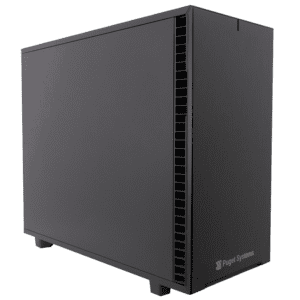One of the questions I get asked frequently is “how much difference does PCIe X16 vs PCIe X8 really make?” Well, I got some testing done using 4 Titan V GPU’s in a machine that will do 4 X16 cards. I ran several jobs with TensorFlow with the GPU’s at both X16 and X8. Read on to see how it went.
Microsoft Build 2018 — impressions
I attended the Microsoft Build 2018 developers conference this week and really enjoyed it. I wanted to share my “big picture” feelings about it and some of the things that stood out to me. I’m not going to give you a “reporters” view or repeat press-release items. This is just my personal impression of the conference.
Multi-GPU scaling with Titan V and TensorFlow on a 4 GPU Workstation
I have been qualifying a 4 GPU workstation for Machine Learning and HPC use. The last confirmation testing I wanted to do was running it with TensorFlow benchmarks on 4 NVIDIA Titan V GPU’s. I have that systems up and running and the multi-GPU scaling looks very good.
GPU Memory Size and Deep Learning Performance (batch size) 12GB vs 32GB — 1080Ti vs Titan V vs GV100
Batch size is an important hyper-parameter for Deep Learning model training. When using GPU accelerated frameworks for your models the amount of memory available on the GPU is a limiting factor. In this post I look at the effect of setting the batch size for a few CNN’s running with TensorFlow on 1080Ti and Titan V with 12GB memory, and GV100 with 32GB memory.
NVIDIA Titan V plus Tensor-cores Considerations and Testing of FP16 for Deep Learning
Tensor-cores are one of the compelling new features of the NVIDIA Volta architecture. In this post I discuss the some thought on mixed precision and FP16 related to Tensor-cores. I have some performance results for large convolution neural network training that makes a good argument for trying to use them. Performance looks very good.
GTC 2018 Impressions
NVIDIA’s Graphics Technology Conference (GTC) is probably my all-time favorite conference. It’s an interesting blend of “Scientific Research meeting” and Trade-Show. It’s put on by a hardware vendor but still feels like a scientific meeting. It’s not just a “Kool-Aid” fest! In this post I go present some of my thoughts about this years conference.
NAMD Performance on Xeon-Scalable 8180 and 8 GTX 1080Ti GPUs
This post will look at the molecular dynamics program, NAMD. NAMD has good GPU acceleration but is heavily dependent on CPU performance as well. It achieves best performance when there is a proper balance between CPU and GPU. The system under test has 2 Xeon 8180 28-core CPU’s. That’s the current top of the line Intel processor. We’ll see how many GPU’s we can add to those Xeon 8180 CPU’s to get optimal CPU/GPU compute balance with NAMD.
TensorFlow Scaling on 8 1080Ti GPUs – Billion Words Benchmark with LSTM on a Docker Workstation Configuration
In this post I present some Multi-GPU scaling tests running TensorFlow on a very nice system with 8 1080Ti GPU’s. I use the Docker Workstation setup that I have recently written about. The job I ran for this testing was the “Billion Words Benchmark” using an LSTM model. Results were very good and better than expected.
Intel CPU flaw kernel patch effects – GPU compute Tensorflow Caffe and LMDB database creation
The Intel CPU flaw and the Meltdown and Spectre security exploits are causing a lot of concern. There is a possibility of application slowdown from the kernel patches to mitigate the exploits. This slowdown concern is a concern for GPU accelerated application because of the systems calls they require for moving data between CPU and GPU memory space. I did some testing on a couple of large Tensorflow and Caffe machine learning jobs along with the creation of a LMDA database from 1.3 million images.
NVIDIA Titan V vs Titan Xp Preliminary Machine Learning and Simulation Tests
NIVIDA announced availability of the the Titan V card Friday December 8th. We had a couple in hand for testing on Monday December 11th, nice! I ran through many of the machine learning and simulation testing problems that I have done on Titan cards in the past. Results are not the near doubling in performance of past generations… but read on.
